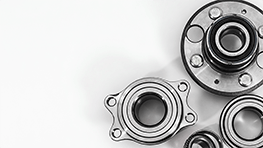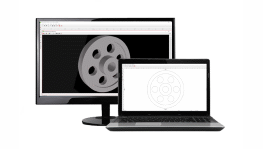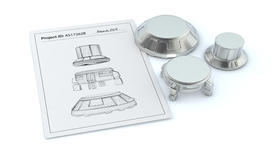Custom Titanium Parts
eMachineShop has machined titanium parts for over 15 years. You can design and order your parts with our free CAD software or upload your own CAD file for a fast quote.
- FREE Shipping in the USA.
- No Minimum Order Quantity.
- 100% Quality Guaranteed.

Titanium
is a transition metal often used in the aerospace, medical, and military industries. It is as strong as steel, but 40% lighter.Titanium is ductile and has a high melting point, making it ideal for extreme heat applications.
Properties of Titanium
- Exceptionally high strength-to-weight ratio
- Corrosion resistant
- Ductile
- High melting point
- Non-magnetic
- Low thermal conductivity
- Low electrical conductivity
Applications
- Aircraft/spacecraft frames and engines
- Missiles and other weaponry
- Hydraulic systems
- Ocean-deployed surveillance devices and submarines
- Gears
- Compressor blades
- Sporting equipment
Machining Options
CNC Milling
Mills use rotating tools to cut material into almost any 3D shape. CNC Mills can work with tight tolerances.
Waterjet Cutting
Waterjets mainly cut sheet material into 2D parts using a high-pressure stream of water and abrasive. Waterjet cutting is suitable for most materials and yields clean edges.
CNC Turning
CNC Lathes feed cutting tools into rotating material. Turning is mainly used to produce precise, cylindrical parts.
EDM
Die-Sink and Wire EDM machines create parts by using recurring sparks to remove material. Recommended for intricate designs requiring sharp inside corners and high dimensional accuracy.
Laser Cutting
Laser cutting is often used to produce 2D parts from sheet metal. A laser beam vaporizes a cut path to achieve the desired shape. Great for prototypes and short runs.
Plasma Cutting
CNC Plasma Cutters use a high-velocity stream of ionized gas to cut parts out of sheet metal. Excellent for producing 2D parts when working with thick metal sheets.
Secondary Manufacturing
After manufacturing, parts may require additional processing. Secondary services include CNC bending, grinding, tapping, knurling and more.
Surface Finishing
Finishing processes are used to enhance appearance, surface durability, and corrosion resistance. Options include powder coating, anodizing, plating, polishing and more.




